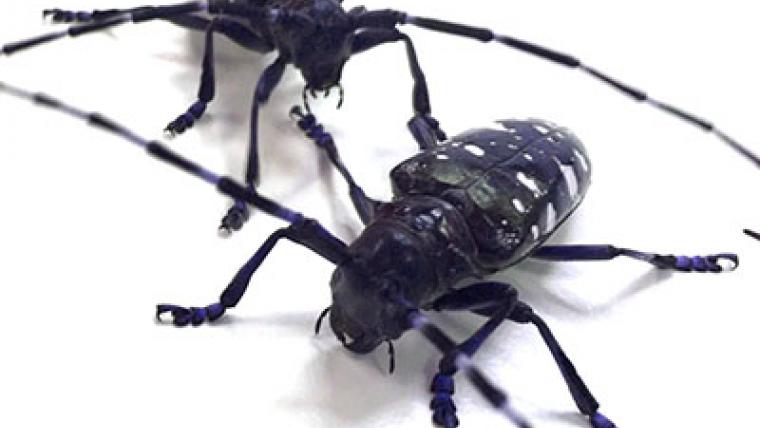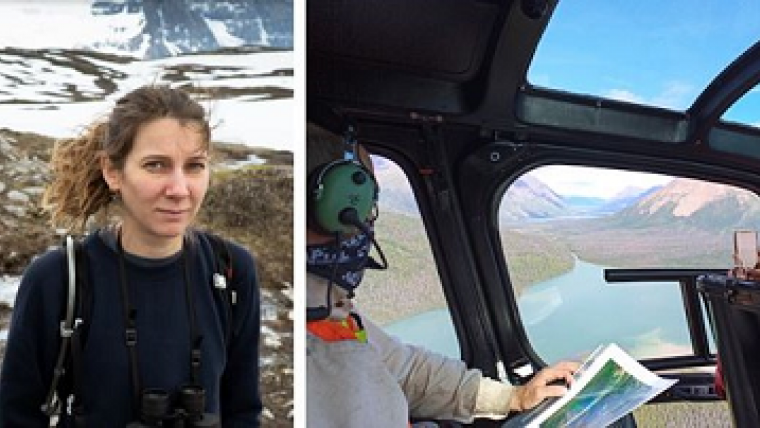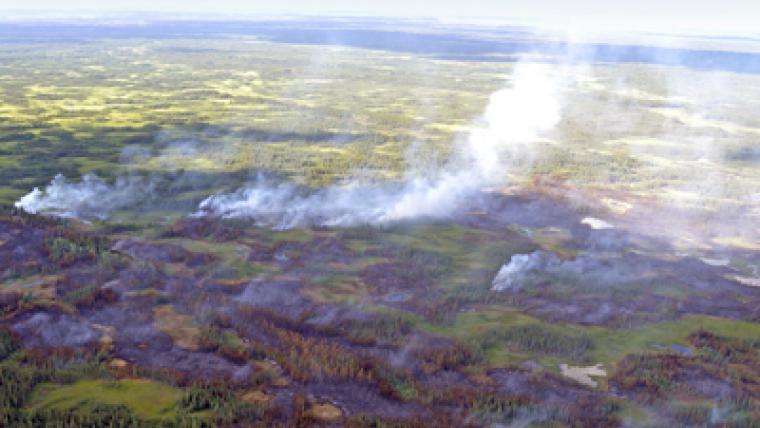A look at butternut defence mechanisms!
By Nathalie Chaperon, Senior Communications Officer – Quebec Region
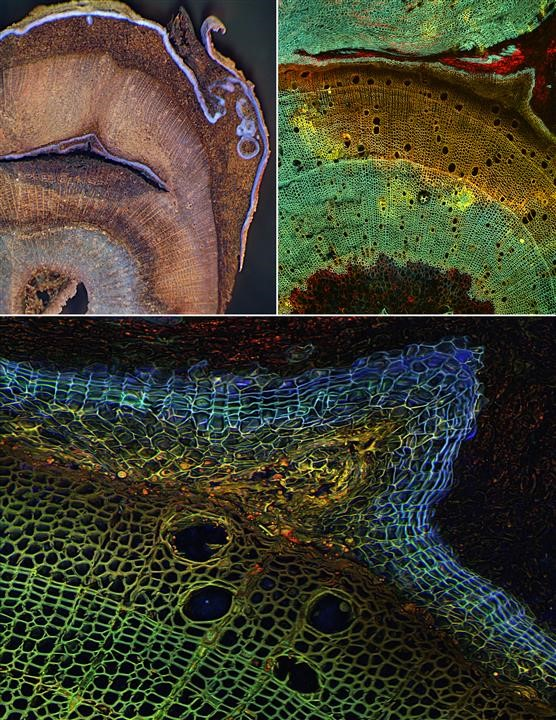
In recent weeks, visitors to the Rio Tinto Alcan Planetarium in Montreal have been admiring 20 photographs taken as part of Canadian scientific research. One image with shimmering colours is particularly attracting attention. Taken by Natural Resources Canada (NRCan) researchers, it illustrates the defence responses of the butternut, or white walnut, tree when attacked by an exotic pathogenic fungus.
This sensational photo by Martine Blais and Danny Rioux has been recognized by the Quebec scientific community. It is a finalist in the La Preuve par l’image scientific photo contest of the Association francophone pour le savoir (Acfas).
A two-year-old butternut (Juglans cinerea) stem inoculated with the Ophiognomonia clavigignenti-juglandacearum fungus, coated in a resin and cross-sectioned. Width of bracket: 4 mm. The bottom image was given an algorithmic treatment, which improves the resolution.
Several natural colours are distinguished, representing defensive substances that are fluorescent under different wavelengths in microscopy. The mauve fluorescence of the bark on the perimeter of the stem (upper left) is also surprisingly observed in the form of a bracket in the wood, a barrier that protects the healthy tissues from the infected tissues. The other images show the bracket at a greater enlargement, as well as the necrosis in brown (upper right). The resolution of the fluorescence of the bark is particularly exceptional in confocal microscopy (bottom), as is that of the antimicrobial phenols visible here in red or yellow.
Where art and science intersect
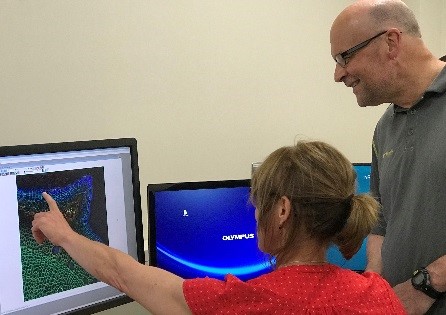
Martine Blais, Forest Research Technologist and Danny Rioux, Scientific Researcher at work with the confocal microscope that was used to create the finalist photo.
In the laboratory, our researchers inoculated healthy trees with this fungus. They were able to observe the specimens’ defence mechanisms under the microscope, such as compartmentalization, which isolates the infected tissues from the healthy parts of the tree. According to the researchers, only the trees that succeed in compartmentalizing the affected areas efficiently should be chosen for programs to conserve and restore the species.
The image, which is currently on display at the Planetarium, illustrates this compartmentalization (the brackets in the image). All the colours associated with the mechanisms studied turned out to be particularly exceptional when seen through a specialized microscope. This image was produced under a confocal microscope by Martine Blais, a forest research technologist. “With its lasers, optical elements and rapid scanning device, it obtains high-resolution, three-dimensional images of microscopic objects so they can be analyzed and studied,” explains scientific researcher Danny Rioux of the Canadian Forest Service’s Laurentian Forestry Centre. “This is a high-tech tool that requires specific training to be used to its full potential. The Canadian Forest Service has only one of these microscopes, which it acquired recently. They have been commonly used in medicine for several years,” Danny points out.
Taking a microscopic look to help preserve this species
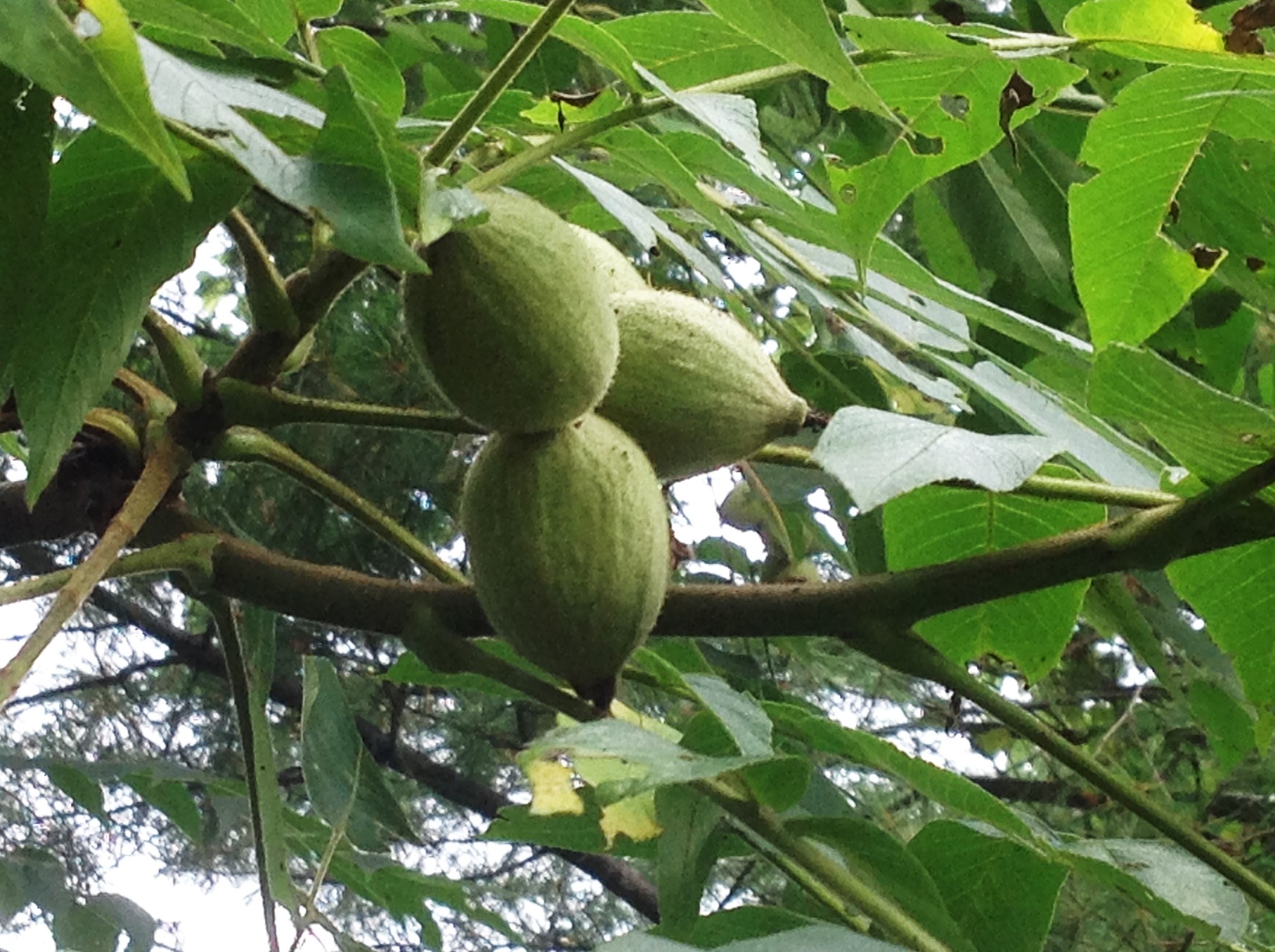
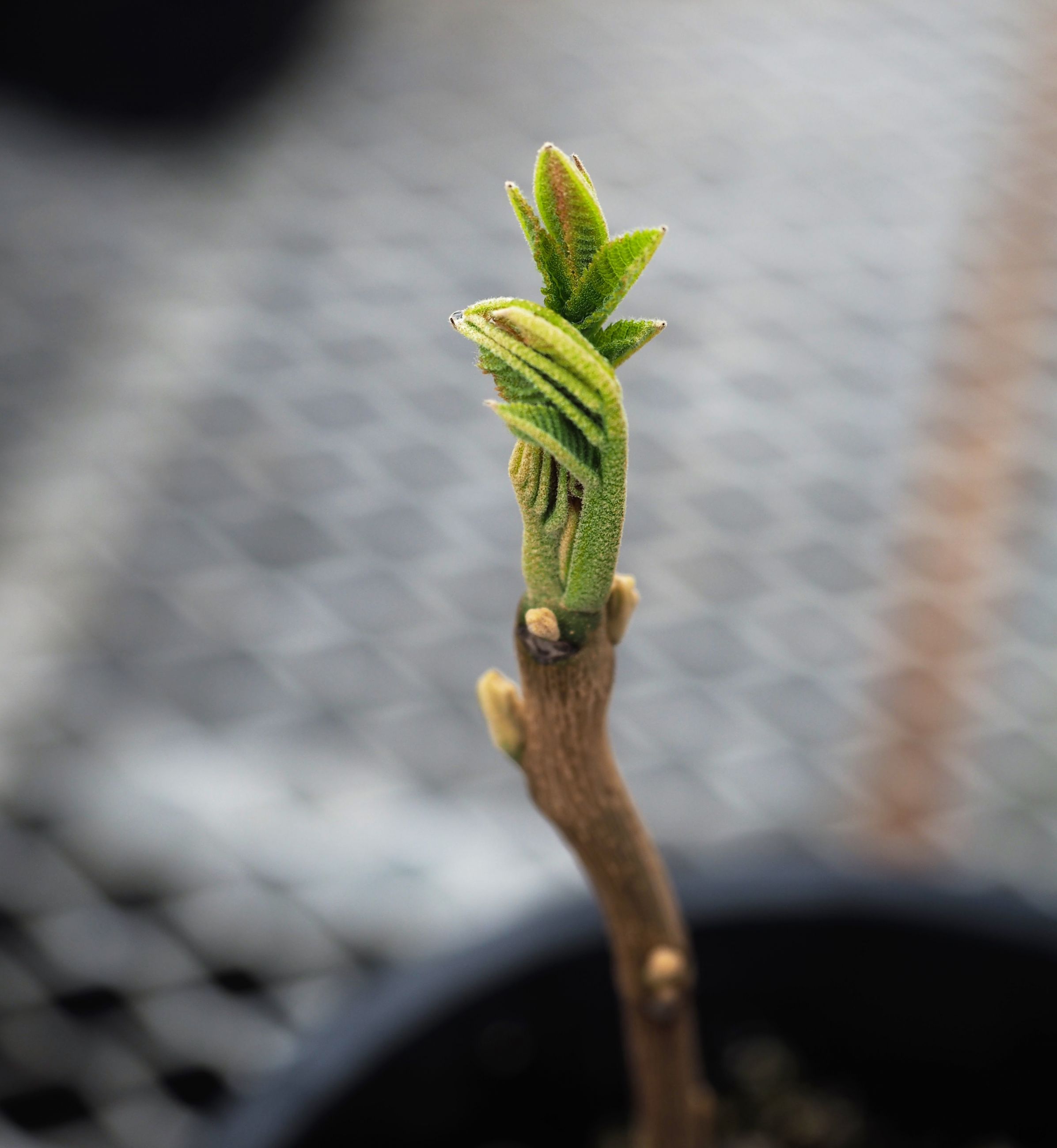
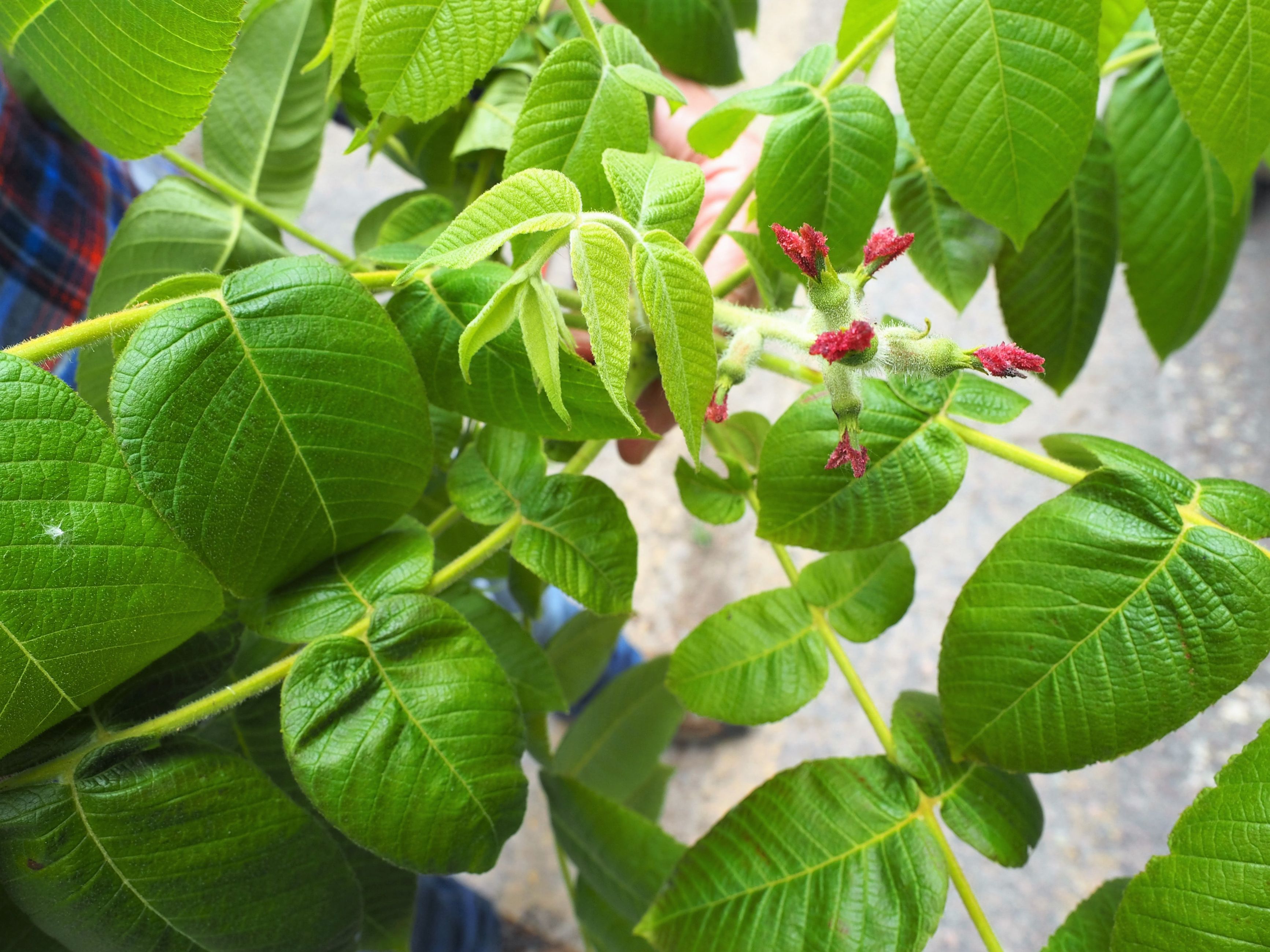
Butternut tree (Juglans cinerea)
The butternut is a hardwood found in many forests of Canada (Ontario, Quebec and New Brunswick) and in eastern and central United States. It produces nuts prized by rodents, and its wood is appreciated by cabinetmakers. Unfortunately, it is now rare due to canker caused by an exotic fungus, saddled with the scientific name Ophiognomonia clavigignenti-juglandacearum.
“It is now recognized that this canker affects the butternut throughout its distribution range in North America,” explains Danny. “The percentage of individuals affected varies depending on the site, but we have every reason to believe that it is at least 50 percent at each location. This disease also complicates butternut reproduction, because this species is rarely self-fertile. It is essential that a minimum of two healthy butternut trees be near each other for the species to reproduce.”
The situation is serious enough for the butternut to have been identified as an endangered species in Canada since 2005 under the Species at Risk Act. It is therefore essential to identify and protect the potentially resistant trees in order to preserve this species and thus maintain the biodiversity of Canadian forests.
In a summary article published very recently, our scientists report on years of research to restore and protect this species threatened by this pest.
To learn more about our researchers’ work on the butternut:
- Butternut: what are its odds against canker?
- L’histoire d’un chancre menaçant d’exterminer le noyer cendré
- First extensive microscopic study of butternut defense mechanisms following inoculation with the canker pathogen Ophiognomonia clavigignenti-juglandacearum reveals compartmentalization of tissue damage, 2018 (article on butternut defence mechanisms, English only)
- More about the Acfas scientific photo contest (French only)
Page details
- Date modified:
